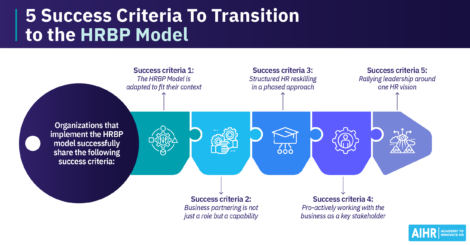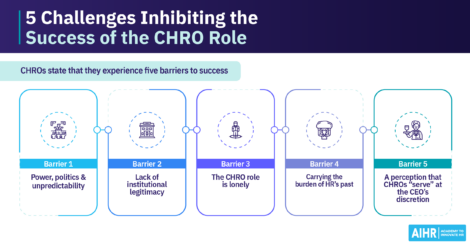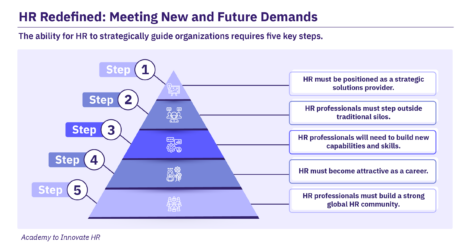4 Building Blocks of Impactful Employee Advocacy Programs
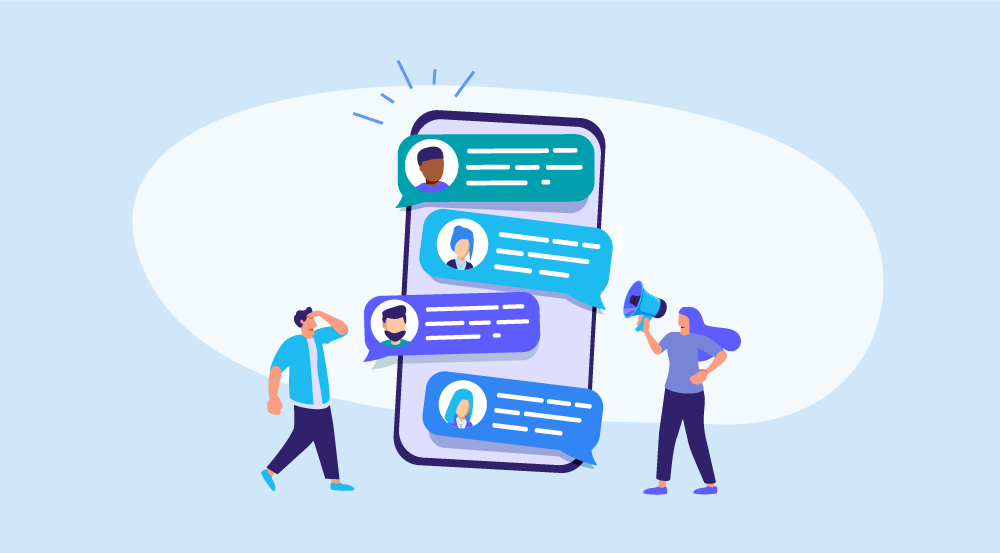
With the rise of social media, employee advocacy programs have become an important pillar of your employer brand and talent attraction strategy. In a highly competitive and employee-driven market, talent has become selective in terms of who for, where, and when they want to work.
People perceive employee-generated content to be more authentic and credible when evaluating a potential employer. Yet, despite the opportunity this provides, many organizations are hesitant to utilize these programs in a purposeful manner as part of their employer brand strategy. Let’s find out how to create an employee advocacy program to build the credibility of your employer brand!
Contents
What are employee advocacy programs?
Why does your organization need an employee advocacy program?
What are the building blocks of an employee advocacy program?
The consequence of the building blocks not being aligned
Critical success factors
What are employee advocacy programs?
An employee advocacy program, also referred to as employee ambassador program, identifies internal brand advocates who actively and purposefully share authentic employee content to a targeted audience to create visibility and awareness of your organization as an employer.
The intention is to:
- share lived experiences,
- show prospective talent who they will be working with,
- and glimpse the type of projects the talent would be involved in.
Even though this sounds simple, many organizations have been skeptical about adopting this level of transparency. They fear other organizations poaching their existing talent or gaining insight into what their competition is doing. They have also been wary of employee-generated content creating reputational risks and losing control of the public image that the organization wants to portray.
The contradiction here is that authentic employee content tends to be more believable, perceived to be more trustworthy, and contributes to the brand’s perception in the market. Research shows that candidates trust the company’s employees 3x more than the company when it comes to providing credible information on the work environment.
The risk of employees sharing intellectual property or harmful content can also be mitigated with proper education and guidance. The fear of employees providing negative perspectives via social media is not unfounded, as this is already happening. Still, employees tend to use anonymous platforms such as Glassdoor for this purpose.
An intentional and well-designed employee advocacy program can help mitigate these concerns while also providing the opportunity to use employee-generated content to connect with specific talent pools.
Your employees are already online. An employee advocacy program can help you utilize their presence to strengthen your employer branding strategy.
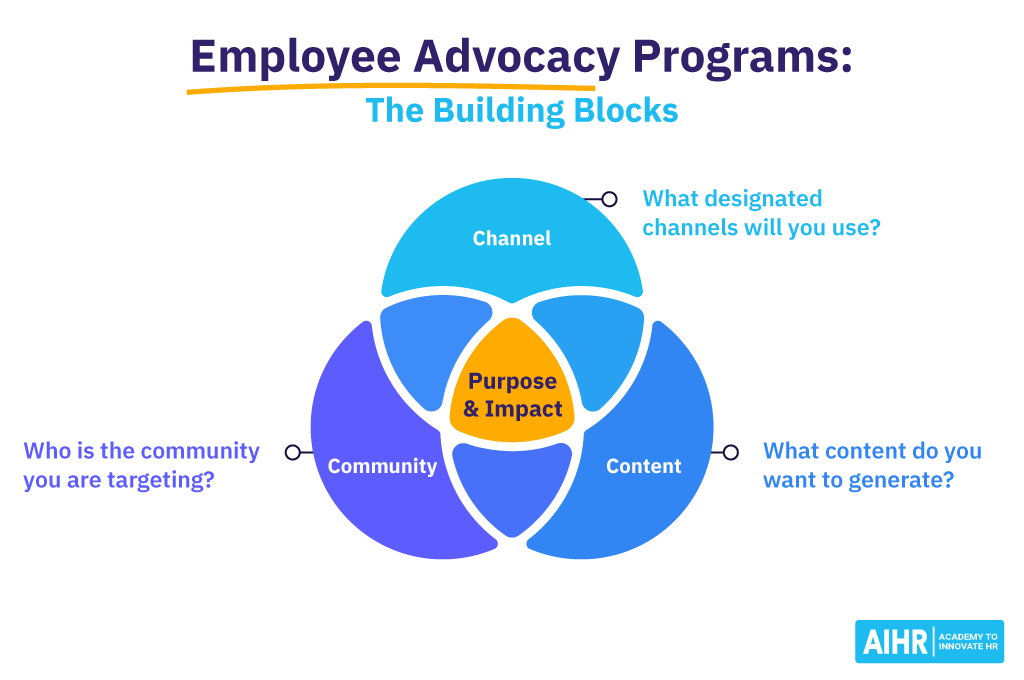
Why does your organization need an employee advocacy program?
Employee advocacy programs have numerous benefits for both the organization and the employees involved.
| For organizations | For employees |
| An authentic presence in specific talent segments that are hard to target and in high demand, e.g., to close the digital talent gap | Building of personal brand and credibility in the external market |
| Increased visibility of your employee experience | Getting access and exposure to specific channels and events to build their presence |
| Higher believability of the messages that are shared in the public market, which leads to more trust in the brand | Being positioned as subject matter experts and thought leaders within their specific areas of expertise |
| A higher level of social engagement and visibility of opportunities | Contributing towards their career development by gaining new skills, e.g., content development |
What are the building blocks of an employee advocacy program?
You need to create a robust employee advocacy program on four critical building blocks. These will collectively influence the success of your program.
1. Purpose and impact
The first building block relates to the reason for the program and what it needs to achieve. Importantly, be clear on what is the expected impact of the program.
For example, some programs aim to increase the organization’s visibility in specific talent pools to support attraction. Others are more focused on building the credibility of a particular skill set or domain of expertise within the organization to drive interest in the external market. Being clear about the purpose upfront will help you manage the expectations of your internal stakeholders when demonstrating the value of this initiative. It will also influence the decisions you make in all the other building blocks.
Identifying the critical success metrics for the program needs to be aligned with the purpose. Is success going to be based on achieving a healthier and more robust talent pipeline for scarce skills? Does success entail a more significant brand social following in the market? Or is it being perceived as a thought leader in a particular domain of expertise? Be clear, realistic, and concise in how you will measure success.
2. Community
Organizations often neglect to segment the external talent pools they want to target through these programs. This initiative has to form part of your broader talent and workforce strategy. As such, a targeted approach to critical supply talent pools should be the focus.
You should follow a data-informed approach to determine the size, nature, and habits of the target community you want to reach. The value of an advocacy program lies in being intentional about who you want to target. You need to build the credibility and visibility of your employees that already form part of those communities. For example, you might focus on digital or actuarial talent pools if these are critical to your business strategy’s success.
For more specialist communities, there is value in engaging with your in-house talent to find out the external communities where they contribute and participate. Do not make any assumptions here! The decisions you make during this stage will significantly influence the channels and content that forms part of your program.
When a multi-national insurance organization Momentum Metropolitan (MM) was starting to build their employee advocacy program, they gathered and analyzed market data and data from Linkedin to understand the talent segment they wanted to target – digital talent. You can read how MM worked to close the digital talent gap with employee ambassador programs here.
3. Channels
Once you have identified the community, you need to determine the channels through which you can engage with its members. Importantly, you have to utilize a channel that already reaches your target community.
An ambassador program should aim to meet the community where they already exist instead of creating new engagement channels. For example, IT talent might engage via closed online chat platforms, while financial talent prefers industry networking events. Your engagement channels should follow suit.
In general, a multi-channel strategy combining online and physical engagement opportunities works best.
You can use social media channels such as MeetUp, LinkedIn, and Twitter to complement specific physical events. An example could be hosting “Women in Technology” events or sending a delegation of your employees to leading industry gatherings and asking them to share their experiences afterward. For instance, organizations in the investment banking industry send delegations to Davos every year. Then, they ask the employees to live tweet from the conference via their social media channels.
4. Content
The final building block refers to the content strategy and type that will underpin your program. Given the understanding of the community and the channels, you should determine what kind of content they will resonate with.
Based upon their content needs, this will also help identify the employee advocates internally who can contribute to the program. When targeting specialist communities, for example, IT, the content needs will be vastly different than when targeting more generic line of business roles, e.g., sales.
An important consideration is also to determine what acceptable content will look like. You need to strike a balance between employee-generated content of a more personal nature and positioning professionally curated content.
Bear in mind that the program’s purpose is to demonstrate an authentic lived experience of your employees. Yet, there needs to be clarity regarding what content is deemed unacceptable to share outside of the organization. Employees will make mistakes. Instead of stifling their enthusiasm, utilize this as a learning moment to build the knowledge within your own advocate community.
The consequence of the building blocks not being aligned
These four building blocks should always be top of mind when designing employee advocacy programs and act as a litmus test for any decision you make down the line. When misalignment occurs, it not only dilutes the program’s impact but can lead to unwanted consequences in terms of how your employer brand is perceived in the market.
- When your channel is misaligned with your community and content, you will find that you are not reaching your desired audience.
- When your content is misaligned with your community, you will reach your target audience but not have a definitive voice or interesting perspective
- When the community is misaligned with channel and content, your program will demonstrate impactful and interesting content through the right platforms, yet not be speaking to the desired audience.

Critical success factors
Once you’ve designed your employee advocacy program, it is important to create internal buy-in regarding the value the program offers and how it contributes toward the broader employer brand objectives. Leaders are often skeptical of these programs. That’s why you need to ensure that the purpose and impact are well-understood to gain their support.
A critical factor will be selecting employees who fit the profile of your program. Depending on the community you are targeting, try to identify employees with subject matter expertise in those domains or the potential and desire to build a personal brand aligned to your goals.
Participating in a program of this nature can be motivating for employees if positioned in the right light and if there is a personal benefit for those who participate. For some, this is a form of career growth. For others, it’s a way of giving back to their specialist communities or a way to build their own networks and thought leadership.
Over to you
In an employee-driven talent marketplace, the value of leveraging employee-generated content to build brand credibility is essential to attract the desired talent.
Even though this is new territory for many organizations, structured and well-positioned employee advocacy programs with a clear purpose and impact aligning the target community, content, and channels have the potential to increase the credibility and attractiveness of the employer. Organizations that get this right will reap the benefits of being an employer of choice in a highly-contested market that is in short supply of the skills required for success.
Weekly update
Stay up-to-date with the latest news, trends, and resources in HR
Learn more
Related articles
Are you ready for the future of HR?
Learn modern and relevant HR skills, online





